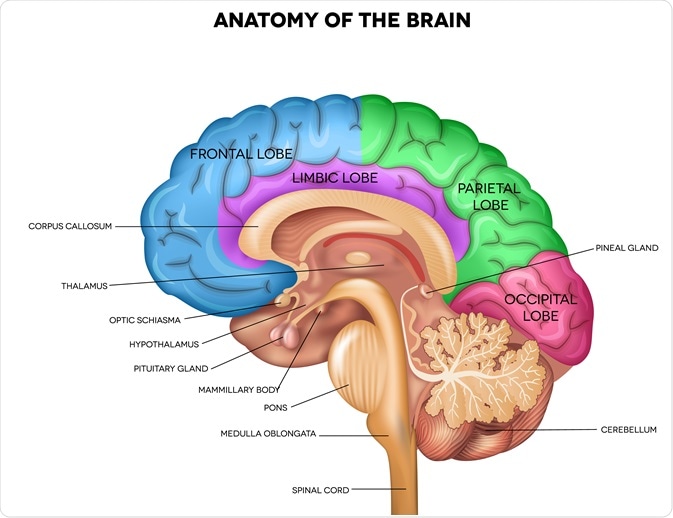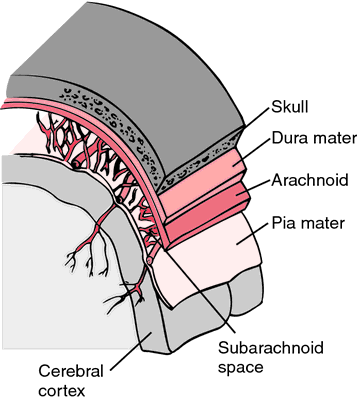10 Brain Anatomy Facts
Here are 10 essential brain anatomy facts.

1. Definition. The brain weighs around 1.5 kgs (about 3 pounds), making up about 2% of total body weight; and requires 20% of our blood supply. It continues to mature – especially the prefrontal cortex – into the mid-20s.
2. Cerebrum. The largest part of the brain is the cerebrum, which is the outer area of the brain, and constitutes about 85% of the brain’s mass and is responsible for thought, memory, and voluntary actions.
3. Cerebral hemispheres. The two cerebral hemispheres (right and left) are connected by a thick nerve fibre bundle called the corpus callosum, which facilitates communication between the sides.
4. Four hemispheres. Each hemisphere is subdivided into four lobes: frontal (executive functions and motor control), parietal (sensory integration), occipital (vision), and temporal (hearing and memory). More detail below.
5. Cerebellum: The cerebellum, located under the cerebrum, coordinates movement, fine motor skills, and balance.
6. Brainstem: The brainstem, composed of the midbrain, pons, and medulla oblongata. It connects the cerebrum with the spinal cord; and controls autonomic functions such as breathing, heart rate, and blood pressure, and acts as a conduit for cranial nerves.
7. Thalamus: The thalamus, situated deep within the brain, acts as a major relay station for sensory information travelling to the cortex.
8. Hypothalamus: The hypothalamus is beneath the thalamus, and above the pituitary gland (and sends it chemical messages that control its function). It regulates body temperature, synchronises sleep patterns, controls hunger and thirst and also plays a role in some aspects of memory and emotion.
9. Blood Supply to the Brain: Two sets of blood vessels supply blood and oxygen to the brain: the vertebral arteries and the carotid arteries.
- The external carotid arteries extend up the sides of your neck, and are where you can feel your pulse when you touch the area with your fingertips. The internal carotid arteries branch into the skull and circulate blood to the front part of the brain.
- The vertebral arteries follow the spinal column into the skull, where they join together at the brainstem and form the basilar artery, which supplies blood to the rear portions of the brain.
10. Meninges: The brain is encompassed and protected by three layers of meninges (dura mater, arachnoid mater, and pia mater) and floats in cerebrospinal fluid for cushioning.

Interesting brain facts
- Sixty percent of the human brain is made of fat, making it the fattiest organ in the human body.
- It consists of about 86 billion neurons. Each neuron forms connections to other neurons, which could add up to 1 quadrillion (1,000 trillion) connections
- It feels no pain. While the brain processes pain signals from other parts of the body, it has no pain receptors itself, which is why brain surgery can be performed on a conscious patient.
- The brain has a higher cholesterol than any other organ. In fact, about 25% of the body’s cholesterol resides within the brain.
- Elephants have evolved huge brain regions to control their trunks.
- Zebrafish can regenerate their spinal cord. In zebrafish, and most amphibians and fish, if you cut their spinal cord and leave the animal, within a week, the whole spinal cord regenerates itself and the fish just swims away. If scientists could work out how, there could be very few people with paraplegia and in a wheelchair.
4 Lobes of the Brain and What They Control
- Frontal lobe. The largest lobe of the brain, located in the front of the head, the frontal lobe is involved in personality characteristics, decision-making and movement. Recognition of smell usually involves parts of the frontal lobe. The frontal lobe contains Broca’s area, which is associated with speech ability.
- Parietal lobe. The middle part of the brain, the parietal lobe helps a person identify objects and understand spatial relationships (where one’s body is compared with objects around the person). The parietal lobe is also involved in interpreting pain and touch in the body. The parietal lobe houses Wernicke’s area, which helps the brain understand spoken language.
- Occipital lobe. The occipital lobe is the back part of the brain that is involved with vision.
- Temporal lobe. The sides of the brain, temporal lobes are involved in short-term memory, speech, musical rhythm and some degree of smell recognition.

